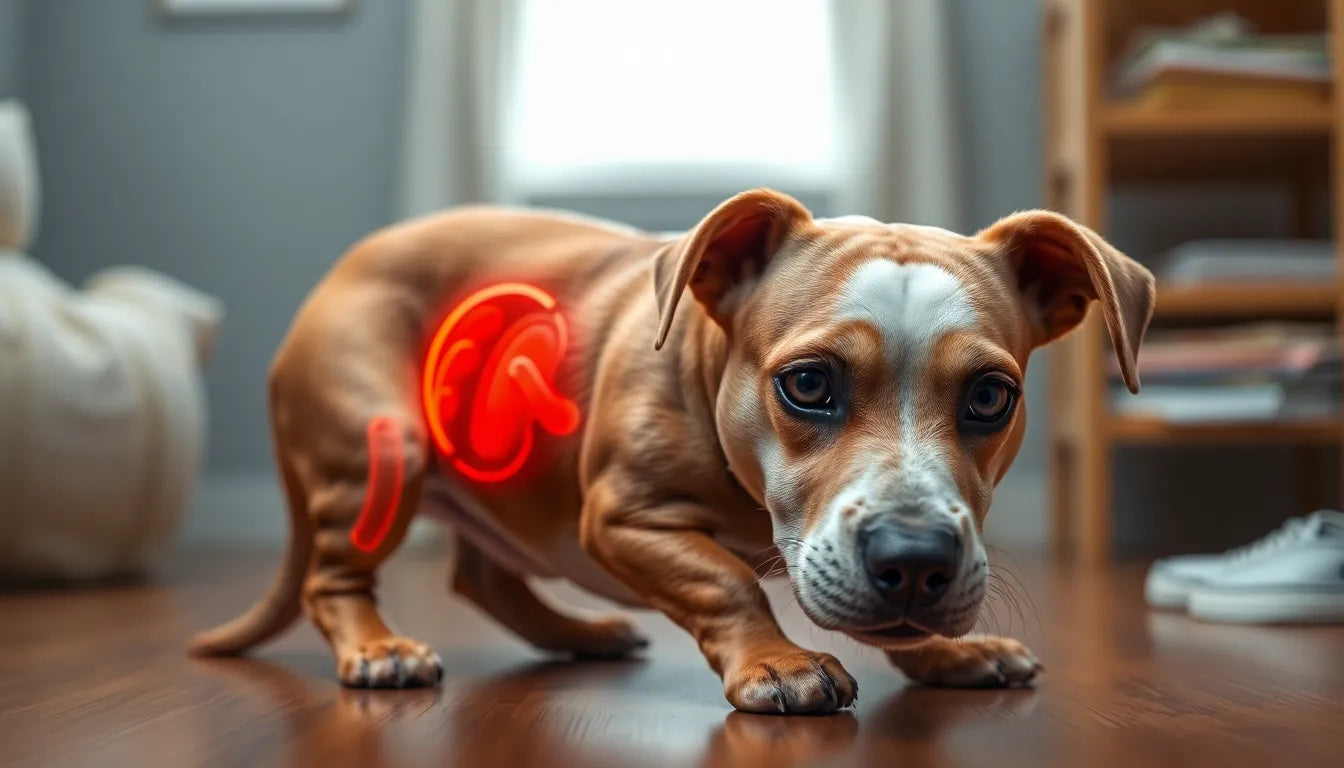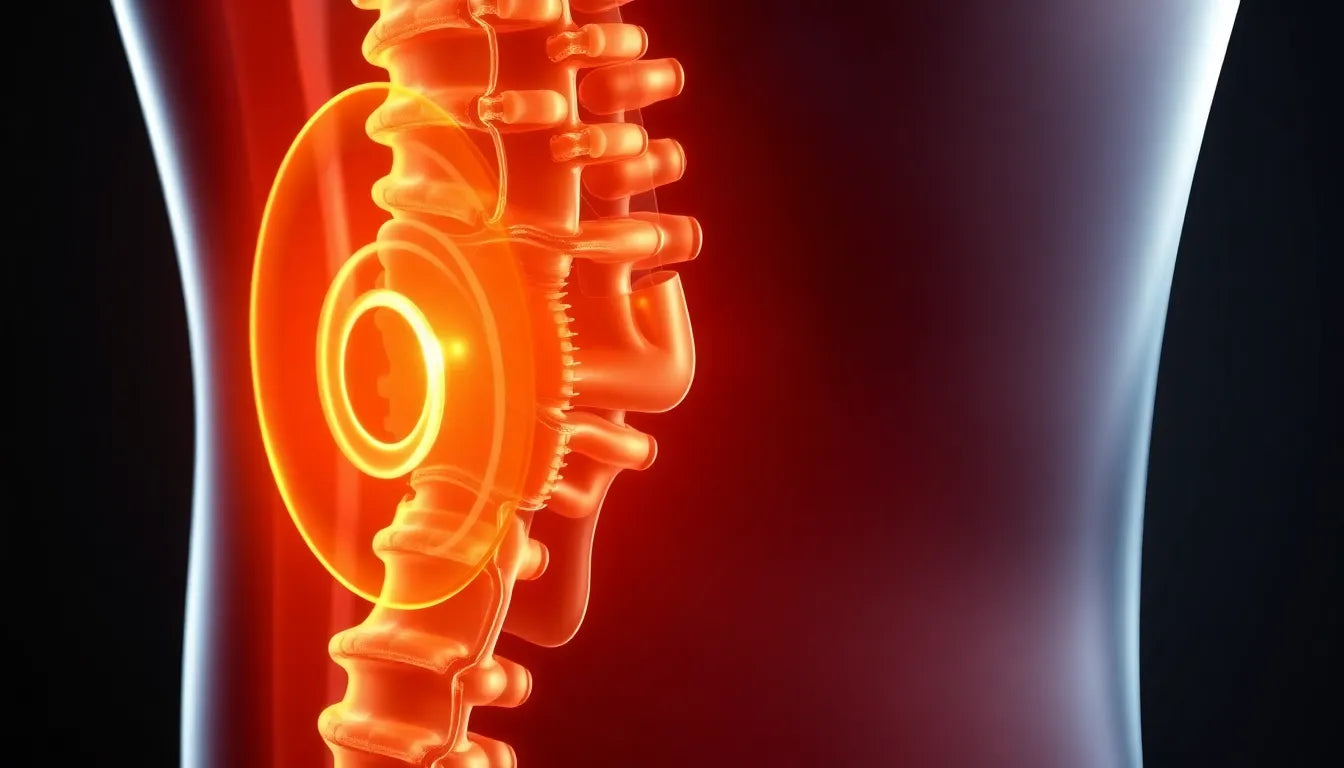Back pain is a common ailment that affects millions of people worldwide, often disrupting daily activities and diminishing quality of life. Among the various causes of back pain, a herniated disc stands out as a prevalent and impactful condition. Understanding how a herniated disc happens is crucial for both prevention and effective management.
Understanding a herniated disc
A herniated disc, sometimes referred to as a slipped or ruptured disc, occurs when the soft, jelly-like nucleus of a spinal disc pushes through a tear in its tougher exterior. This condition can lead to pain, numbness, or weakness in an arm or leg, depending on the location of the herniation along the spine. Spinal discs act as cushions between the vertebrae, absorbing shock and facilitating movement, making their integrity vital for spinal health and overall mobility.
The purpose of understanding herniated discs
This blog post aims to unravel the mystery of how herniated discs occur by exploring the mechanical and biological factors involved. By shedding light on these contributing elements, we hope to provide valuable insights that can aid in the prevention and treatment of this common spinal issue.
In the sections that follow, we will delve deeper into the causes and risk factors associated with herniated discs, offering a comprehensive understanding of this condition. Whether you're seeking to prevent a herniated disc or manage existing symptoms, this exploration will equip you with the knowledge needed to make informed decisions about your spinal health.
causes of herniated discs
Understanding the underlying causes of a herniated disc is crucial for prevention and management. These causes are multifaceted, involving both mechanical and biological factors that can compromise the integrity of spinal discs.
mechanical causes
The mechanical causes of herniated discs often relate to the physical stresses placed on the spine. One primary factor is wear and tear, which is a natural part of the aging process. As we age, the spinal discs lose water content, making them less flexible and more prone to tearing. This degeneration weakens the disc's outer ring, the annulus fibrosus, making it more susceptible to herniation.
Another mechanical cause is sudden injury. This can occur when excessive strain or abrupt movements place undue pressure on the spine. For instance, lifting a heavy object incorrectly or experiencing a fall can cause the nucleus pulposus, the soft center of the disc, to push through a tear in the annulus. Such incidents can result in immediate and severe pain, often requiring medical attention.
biological and environmental factors
Beyond mechanical causes, genetic predisposition plays a significant role in the likelihood of disc herniation. Some individuals inherit traits that make their spinal discs more prone to degeneration, increasing the risk of herniation at a younger age.
Lifestyle factors also significantly contribute to the risk of developing a herniated disc. Obesity, for example, places additional stress on the spine, accelerating wear and tear. Smoking is another critical factor, as it reduces oxygen supply to the discs, impairing their ability to repair and maintain themselves. Additionally, jobs that require repetitive bending, twisting, or heavy lifting can exacerbate the wear on spinal discs, leading to a higher incidence of herniation.
risk factors for herniated discs
Identifying risk factors is essential for those looking to prevent herniated discs. These factors can be categorized into demographics, lifestyle, and occupational risks.
demographics
Age and gender are significant risk factors for herniated discs. Men, particularly those aged 20-50, are more likely to experience this condition. The reasons for this demographic trend are not entirely clear, but it may involve differences in physical activity levels and occupational exposure to high-risk conditions.
lifestyle and occupational risks
Improper lifting techniques are a common cause of herniated discs. It is crucial to lift objects using the legs rather than the back to minimize strain on the spine. Repetitive activities, especially in physically demanding jobs, can also increase the risk. For instance, workers in construction or manual labor who frequently lift heavy items or perform repetitive motions are at a higher risk of disc injuries.
To summarize, understanding the causes and risk factors of herniated discs is vital for prevention and effective management. By recognizing the mechanical, biological, and environmental contributors, individuals can take proactive steps to protect their spinal health and reduce the likelihood of experiencing this debilitating condition.
| Risk Factor | Description |
|---|---|
| Age | Men aged 20-50 are more prone to herniated discs. |
| Improper lifting | Incorrect techniques can lead to disc injuries. |
| Obesity | Excess weight increases stress on the spine. |
| Repetitive activities | Jobs requiring repetitive motions increase risk. |
| Smoking | Reduces oxygen supply to discs, impairing health. |
Symptoms and diagnosis of herniated discs
Recognizing the symptoms of a herniated disc is the first step toward diagnosis and treatment. Common symptoms include localized pain in the back, numbness, tingling, or weakness in the limbs. These symptoms occur when the herniated disc presses against the nerves emanating from the spinal cord. The severity and location of the symptoms often depend on the position of the herniation along the spine.
Diagnosing a herniated disc typically involves a thorough medical history review and physical examination. Physicians may perform neurological tests to assess reflexes, muscle strength, and sensory response. Imaging tests, such as MRI or CT scans, are often used to confirm the diagnosis and determine the extent of the disc herniation.
Prevention tips for maintaining spinal health
Preventing herniated discs involves adopting a proactive approach to spinal health. Maintaining a healthy weight is crucial, as excess body weight places additional strain on the spine, accelerating disc degeneration. Regular exercise, particularly activities that strengthen the core muscles, can provide support to the spine and reduce the risk of injury.
Incorporating ergonomic aids into daily routines is another effective prevention strategy. Ergonomic chairs, desks, and computer setups can help maintain proper posture, reducing stress on the spine. Proper lifting techniques are also vital; always lift with your legs, not your back, to minimize spinal strain.
Frequently Asked Questions
What is the difference between a bulging disc and a herniated disc?
A bulging disc occurs when the disc's outer shell protrudes outward, often without breaking. In contrast, a herniated disc involves a tear in the outer shell, allowing the inner nucleus to escape. Herniated discs typically cause more severe symptoms due to pressure on nearby nerves.
Can herniated discs heal on their own?
Yes, many herniated discs can heal over time with conservative treatments such as rest, physical therapy, and anti-inflammatory medications. However, if symptoms persist or worsen, medical intervention may be necessary.
What are the treatment options for herniated discs?
Treatment options vary depending on the severity of the symptoms. They may include physical therapy, medications to manage pain and inflammation, and, in severe cases, surgical intervention to remove or repair the damaged disc.
How can ergonomic aids help in managing a herniated disc?
Ergonomic aids, such as supportive chairs and adjustable desks, help maintain proper posture and reduce strain on the spine. This can alleviate symptoms and prevent further injury by promoting a healthy spinal alignment.
Are there exercises to avoid with a herniated disc?
It is advisable to avoid exercises that involve heavy lifting, twisting motions, or high-impact activities that can exacerbate the condition. Always consult with a healthcare professional or physical therapist to develop a safe exercise plan tailored to your needs.


















